Tiffany Wonder in Tokyo is ‘intimate, cinematic and refined’
‘Tiffany Wonder’, an exhibition at Tokyo Node Gallery, is a sparkling journey through the history of Tiffany & Co, designed by architects OMA
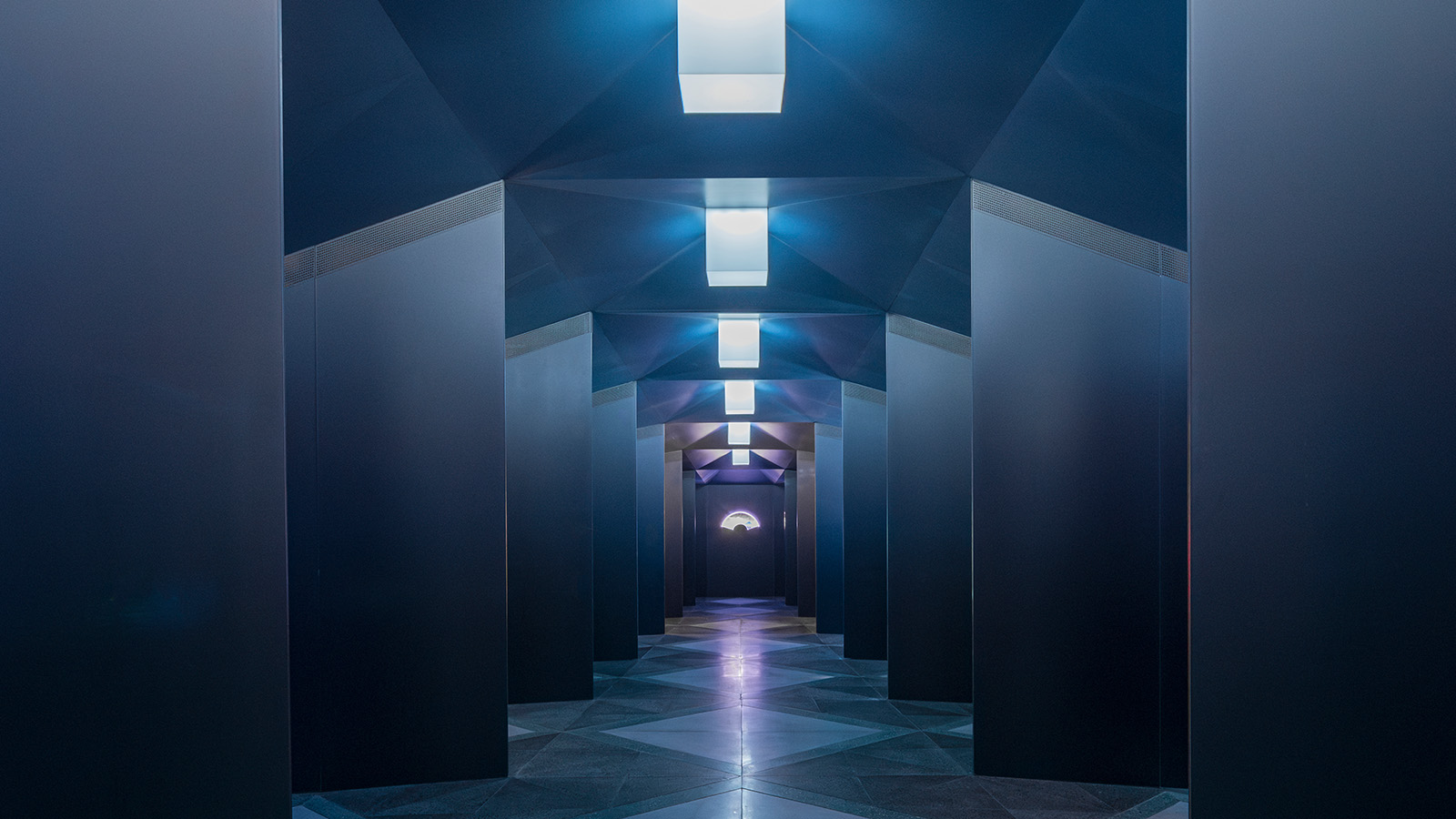
A bird wrapped in diamonds and crowned with a bright gold plume flutters sedately across a dreamy tableau of sakura cherry blossoms and urban skyscrapers. This is the scene that greets visitors at the opening of a new exhibition in Tokyo – a large-scale animation of ‘Bird on a Rock’, designed by Jean Schlumberger in 1965 and perhaps one of the most iconic birds in jewellery history. It’s the first of countless imagination-rich innovations that make up ‘Tiffany Wonder’, a sweeping – and sparkling – exhibition that journeys through the layered history of jewellery house Tiffany & Co, from its 1837 foundation in New York to its modern-day presence.
Inside the sparkling world of ‘Tiffany Wonder’
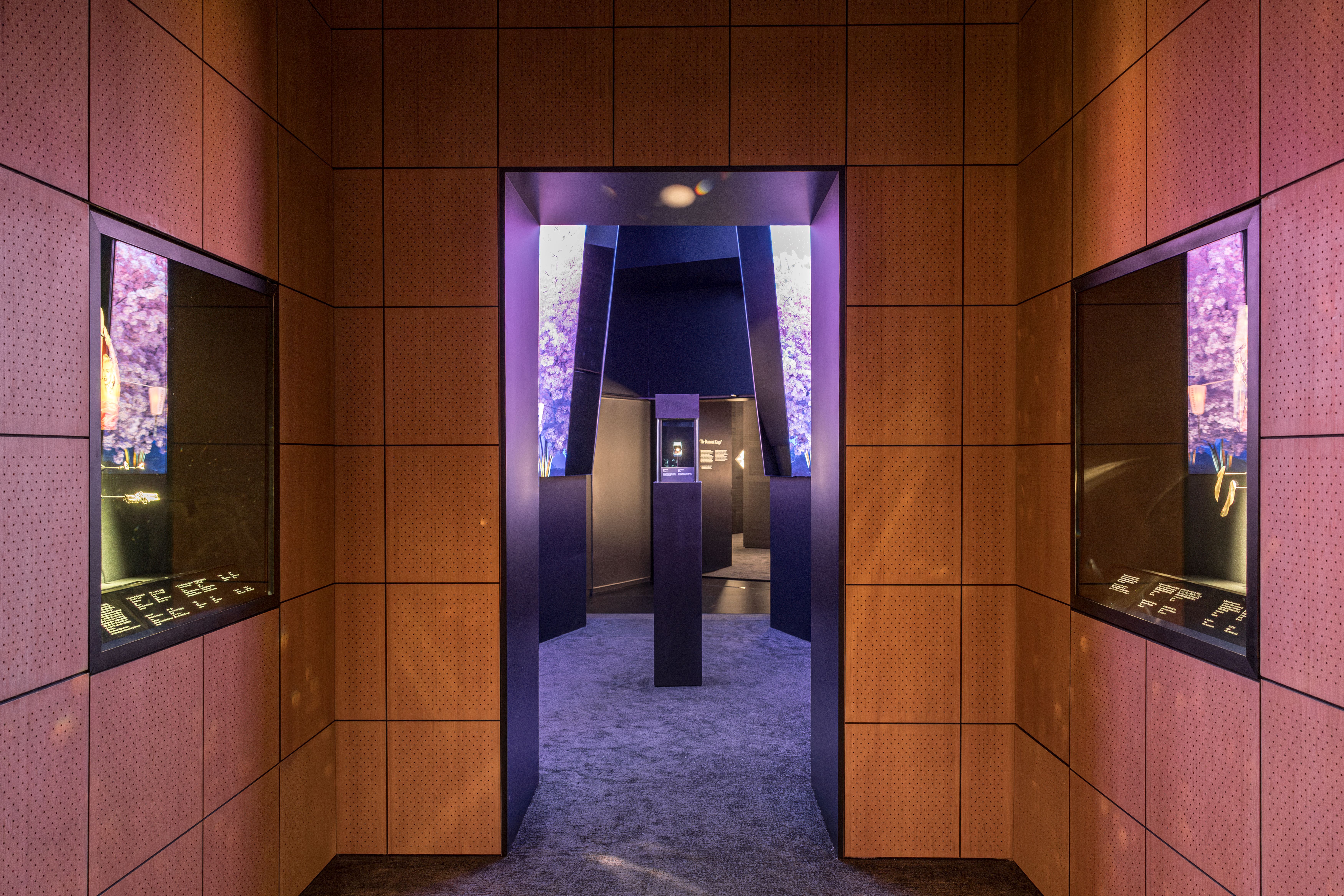
The exhibition, brought to life by Rem Koolhaas’ OMA, spans 1,430 sq m at Tokyo Node Gallery, on the 45th floor of Toranomon Hills Station Tower, a landmark new skyscraper designed by the same architectural practice. ‘Tiffany Wonder’ flows through a dream-liked sequence of ten interconnected spaces, with shifting atmospheres, textures and gem-like shapes – circular, angular, triangular – balancing intimate elegance and a sense of drama with the layered craftsmanship and creativity for which Tiffany has long been celebrated. Scattered among the immersive installations are more than 500 jewellery pieces and objects related to Tiffany & Co’s history – as well as its deep-flowing ties with Japan – many exhibited to the public for the first time, alongside artisans showcasing live their craftsmanship skills.
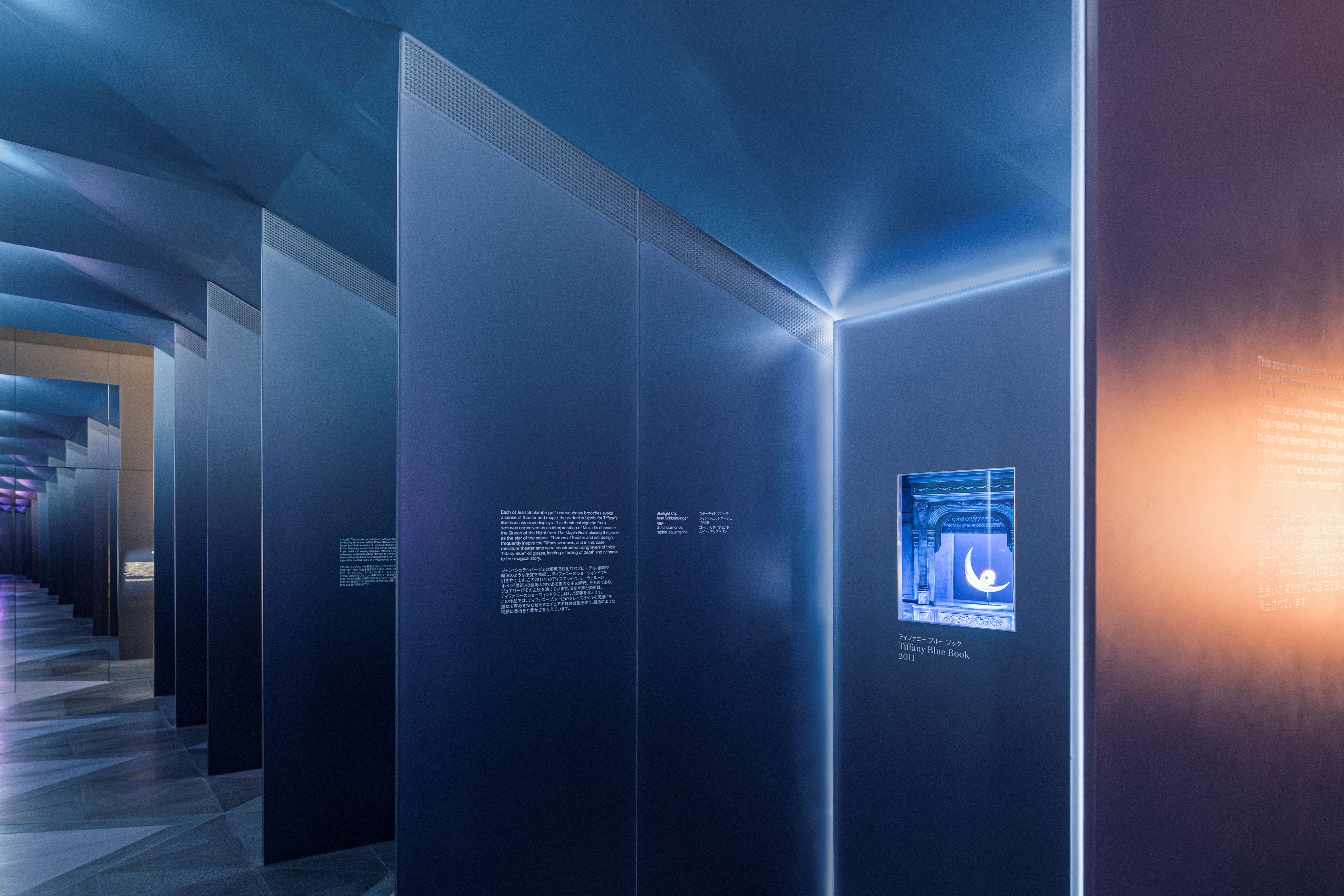
'Intimate, cinematic and refined': these are the three words used by exhibition designer Ellen van Loon, partner at OMA, to describe the essence of its creation. 'The aim was to exhibit the history of Tiffany through objects and jewellery created over almost two centuries,' van Loon tells Wallpaper*. 'Understanding the history of Tiffany & Co – how it evolved from an American stationery and luxury goods company in the 19th century to become a jewellery brand and a globally recognised name – was an important point of departure for us with this exhibition.'
She adds: 'Each room is a self-contained environment with a distinct atmosphere, highlighting a specific aspect of Tiffany’s story and work. The individual character of each space is meant to strengthen the relationship between visitors and the objects on display. This intense, intimate relationship between viewer and object emphasises the time needed for creation, the sophisticated level of craft and the attention to detail.'

The journey begins in a large, dark, double-height space featuring a vast screen, upon which dances an animation of the fluttering ‘Bird on a Rock’ against a backdrop of Tiffany’s art deco lamp-style images depicting scenes of Japan. The visuals create a dreamy transition between outer world and inner Tiffany cosmos, paving the way for a string of spaces exploring the company’s heritage. A signature blue corridor lined with a bespoke digitalised tapestry containing a 187-year timeline of Tiffany’s history flows into a circular room. Displays along the way range from legendary early pieces – among them, the sparkling canary and white diamond form of Tiffany’s inaugural ‘Bird on a Rock’, designed by Schlumberger for his friend Bunny Mellon – to the very first Blue Book mail-order catalogue.
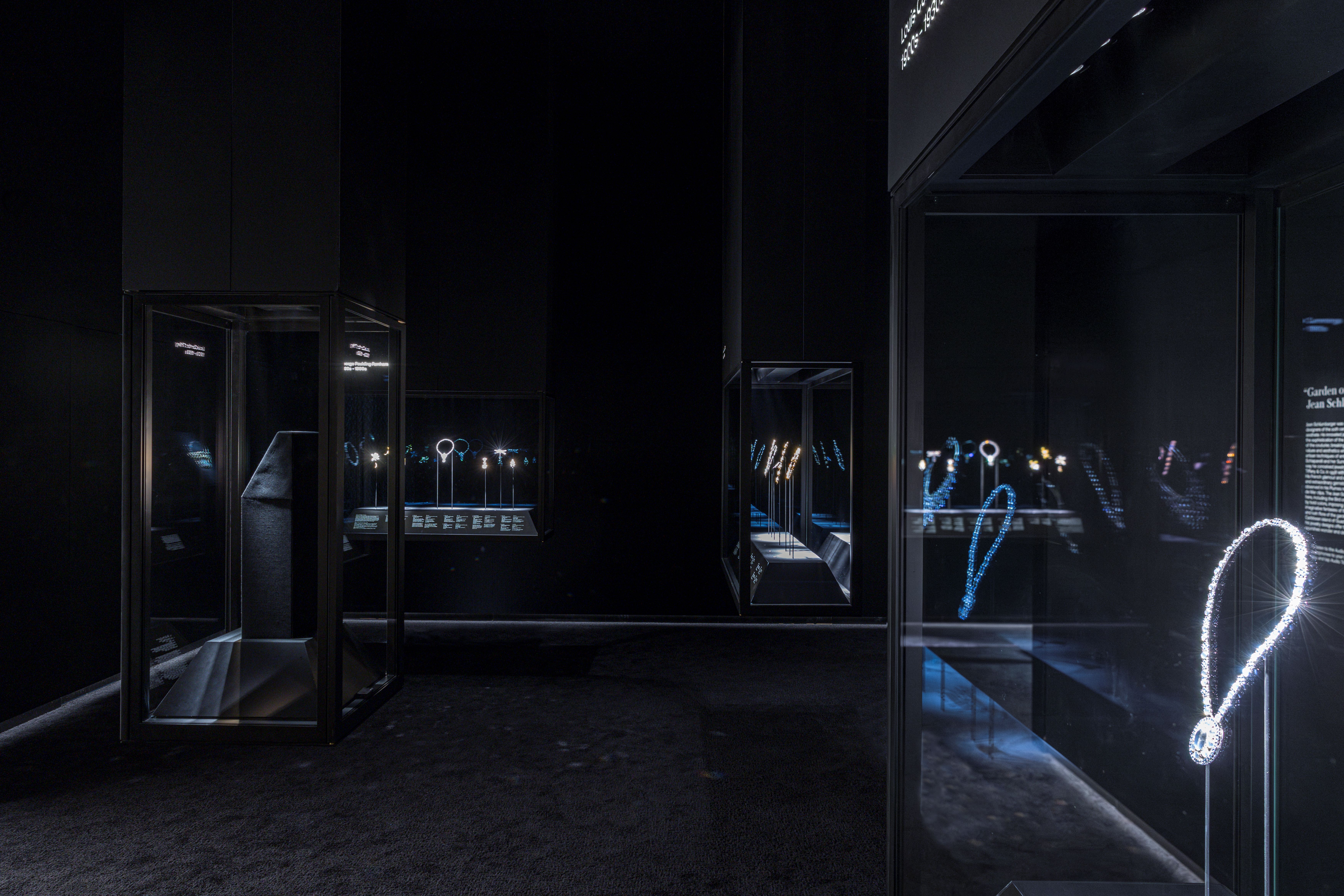
Spotlights on design pieces through the years follow, from the vivid early creations of Louis Comfort Tiffany (son of the founder) and the organic forms of Angela Cummings’ 1970s abstractions to Elsa Peretti’s timeless ‘Scorpion’ necklace. As the exhibition segues from one room to another, highlights include a visual portrayal of iconic Tiffany film moments surveyed on rotating cinema seats alongside original costumes from Breakfast at Tiffany’s; craftsmen at work fastening stones and polishing diamonds; and the atmospheric Wonder of Dreams room, a slope lined with iconic shop displays of the past, beneath an angular gem-like ceiling.
‘As architects, we spend on average between five to ten years completing a building,' says van Loon. 'The awareness that artisans can spend just as long and work just as intensely to create something as small and precious as a piece of jewellery was what we wanted to convey to visitors.
Receive our daily digest of inspiration, escapism and design stories from around the world direct to your inbox.
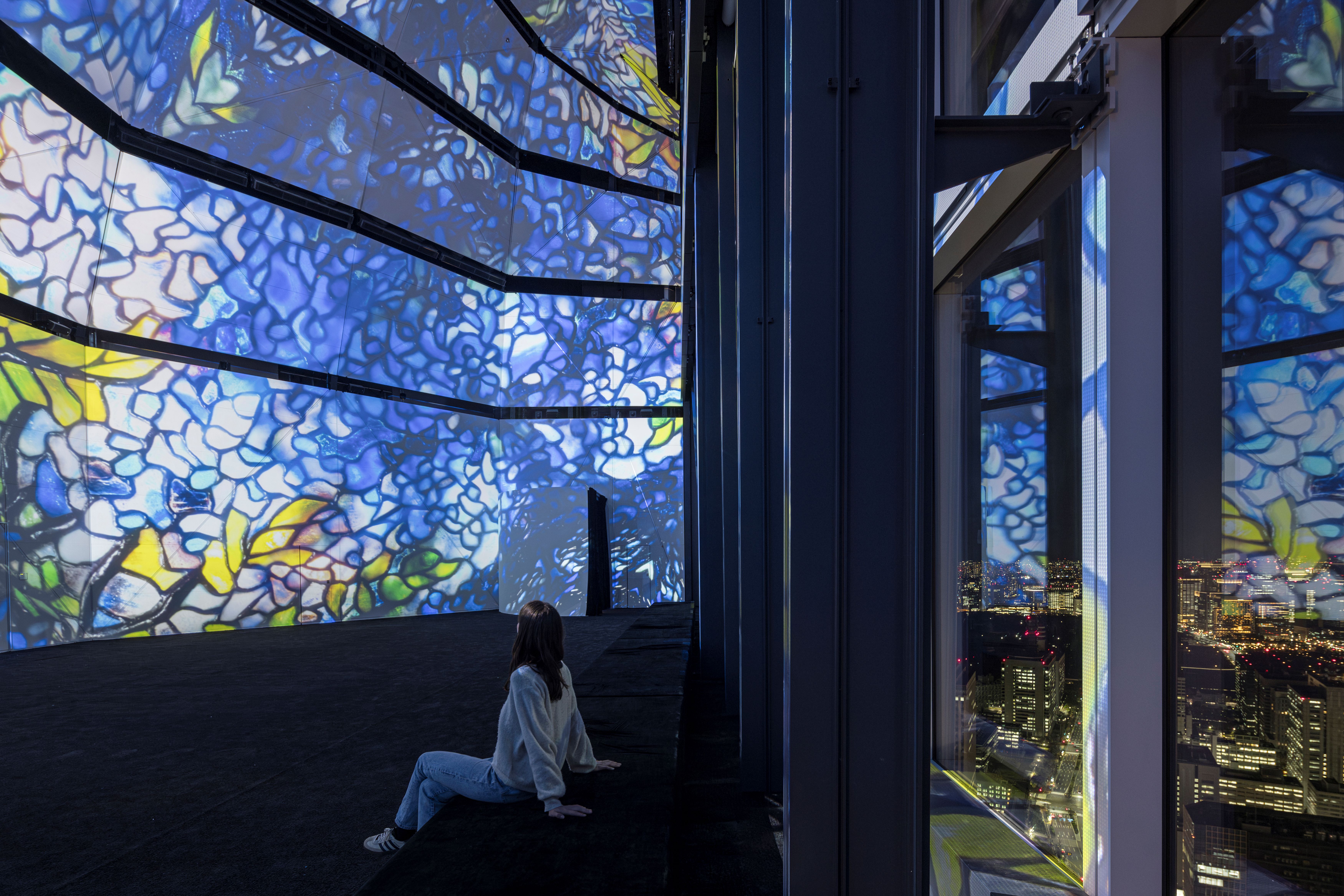
'Our intention was to exhibit the evolution of Tiffany & Co. By presenting Tiffany’s versatility, not only in their designs for jewellery and products, but also through their presence in architecture, music, sport, and film, we were interested in showing the cultural resonance of their designs and the love of craft that has remained a constant throughout their work.'
Japan is another key ingredient, with ties running deep: pioneering founder Charles Lewis Tiffany offered his clients select imported Japanese goods from as early as 1837. A space wrapped in washi-inspired walls contains a range of Japanese crafts and design goods, reflecting the inspiration Japan has long held for the brand.
'The relationship between Tiffany and Japan has been important since the company's earliest years,' explains Giulio Margheri, associate at OMA. 'The exhibition presents this influence through a series of designs that have become emblematic of the brand, including not only jewellery but also objects like stained-glass lamps and lacquered wood.'
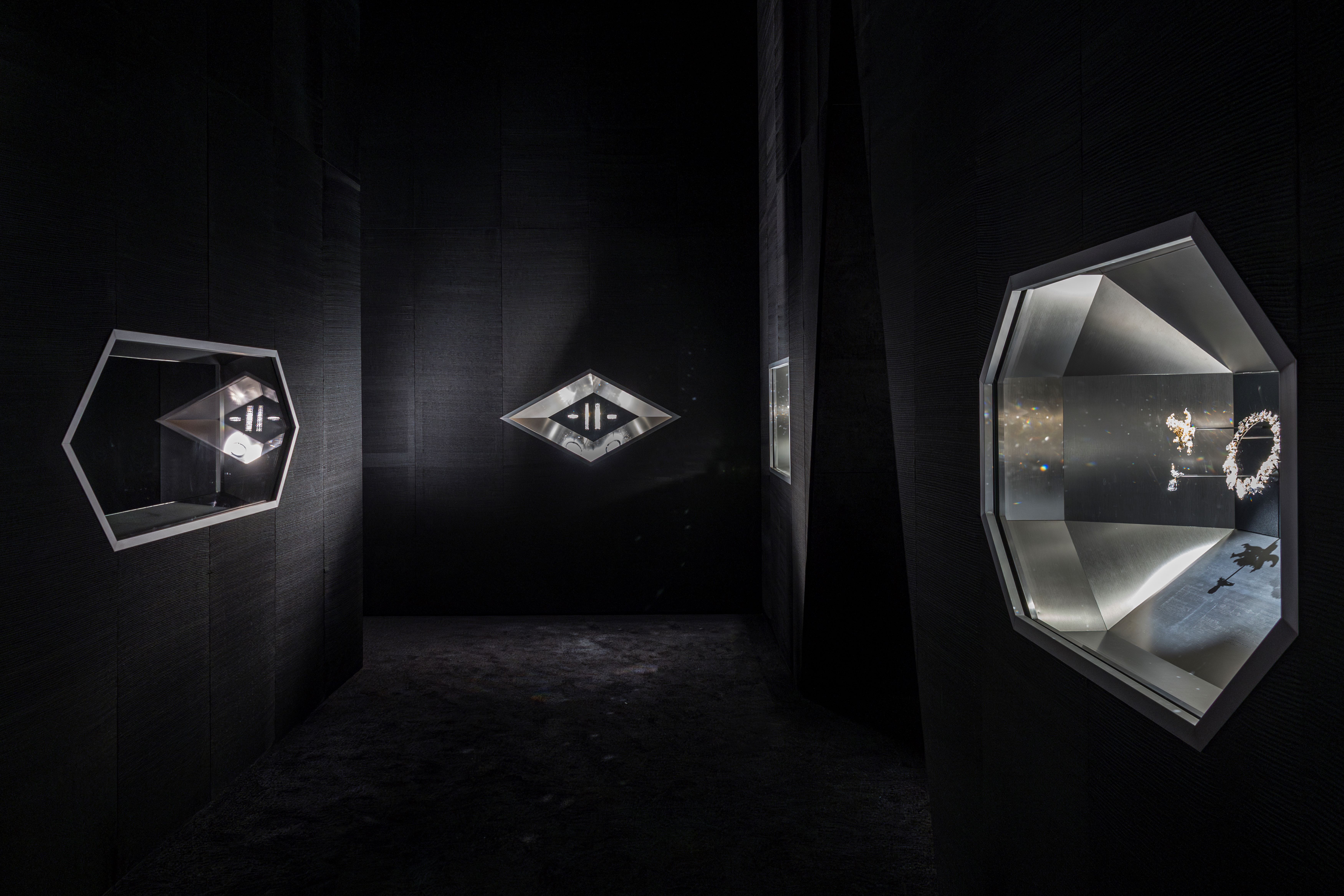
The climax, however, is a towering black triangular installation containing the legendary cornerstone of the jewellery house – the 128.54ct Tiffany Diamond, the world’s largest yellow diamond, set in a 'Bird on a Rock'-inspired design, presented in spotlit glory in a final dream-like flourish.
'The idea of wonder has been integral to our DNA since 1837,' said Alexandre Arnault, executive vice president of product, communications & industrial at Tiffany & Co. 'Since the very beginning, each design that we’ve imagined and each piece that we’ve handcrafted has been rooted in our mission to spark wonder and inspire the world’s greatest love stories.'
‘Tiffany Wonder’ is on display at Tokyo Node Gallery until 23 June 2024, tiffany.com
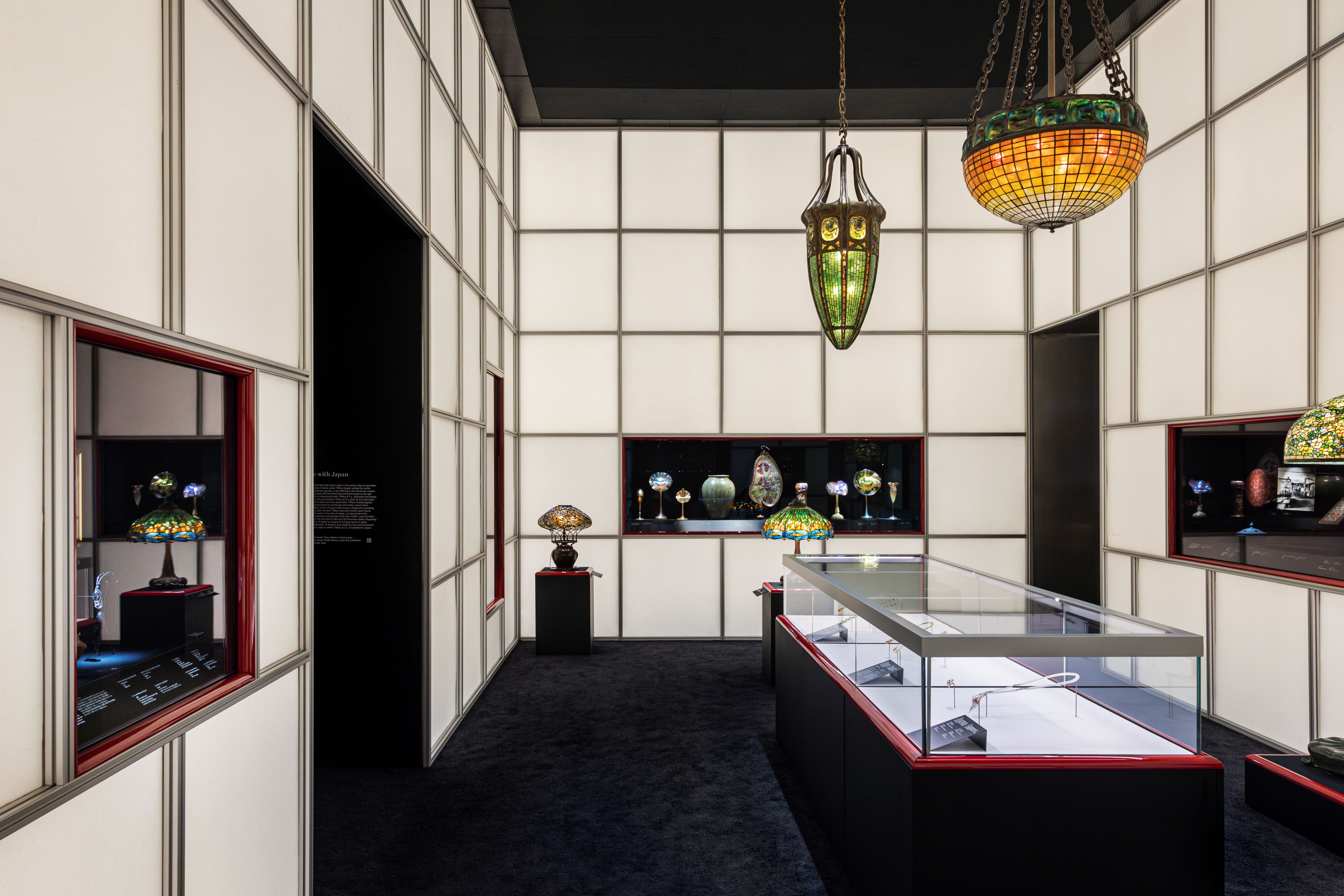
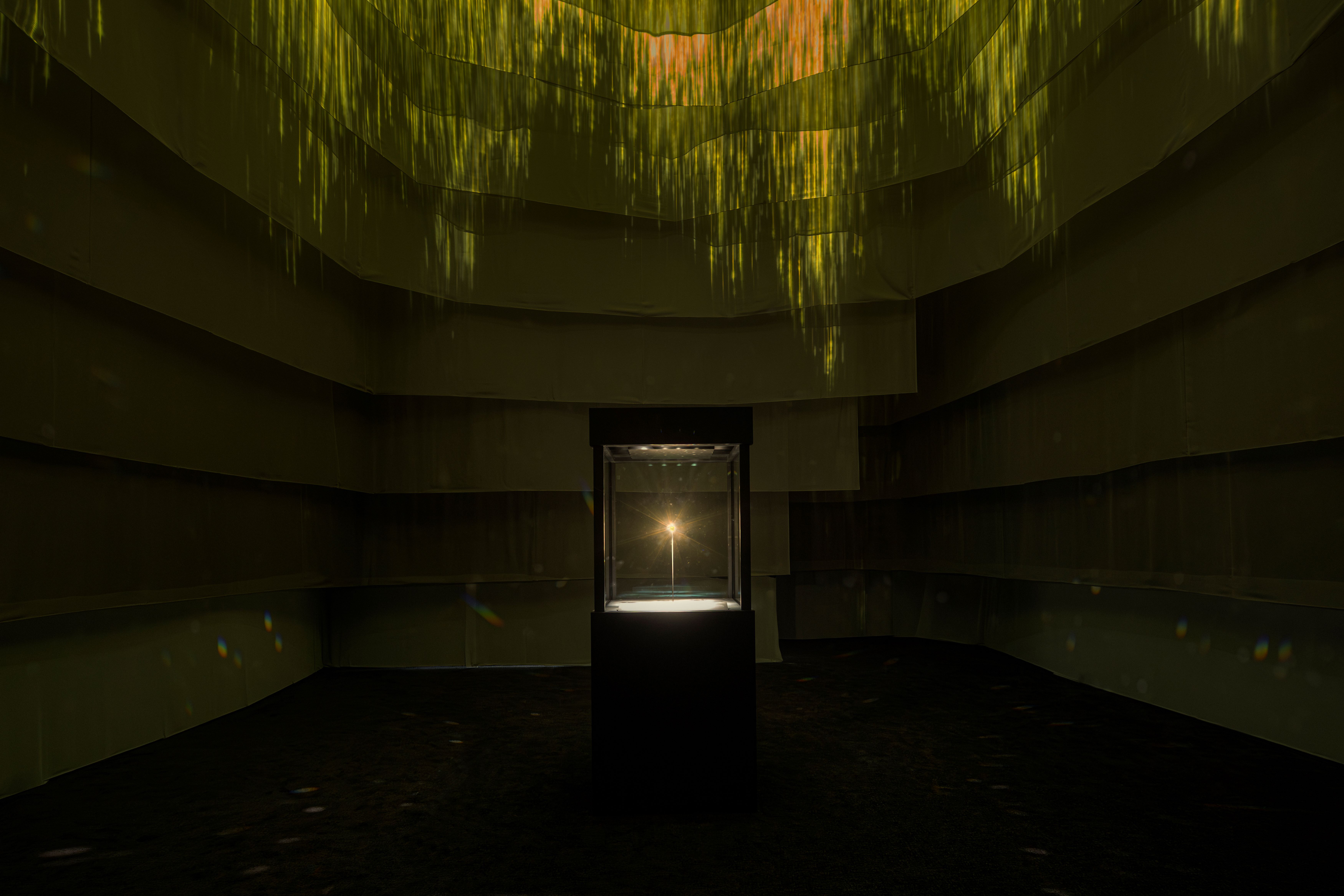
Danielle Demetriou is a British writer and editor who moved from London to Japan in 2007. She writes about design, architecture and culture (for newspapers, magazines and books) and lives in an old machiya townhouse in Kyoto.
Instagram - @danielleinjapan
-
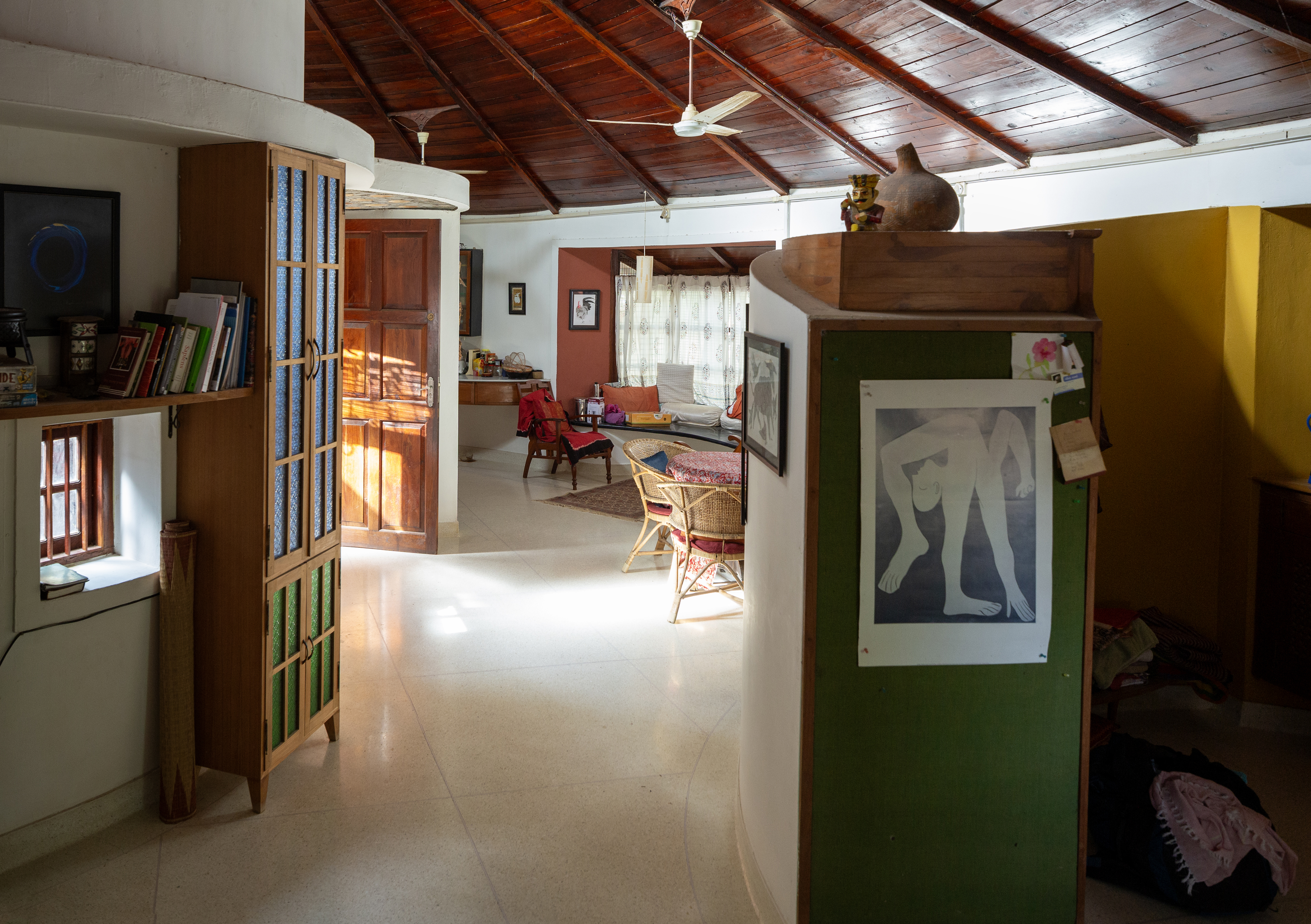 Inside a creative couple's magical, circular Indian home, 'like a fruit'
Inside a creative couple's magical, circular Indian home, 'like a fruit'We paid a visit to architect Sandeep Virmani and social activist Sushma Iyengar at their circular home in Bhuj, India; architect, writer and photographer Nipun Prabhakar tells the story
-
 Ten of the best track jackets for channelling a 1970s-meets-1990s cool
Ten of the best track jackets for channelling a 1970s-meets-1990s coolAs a ‘Marty Supreme’ track jacket makes a bid for viral garment of 2025 – thanks to one Timothée Chalamet – the Wallpaper* style team selects ten of the best tracksuit and coach jackets for men and women, each encapsulating an easy, nostalgia-tinged elegance
-
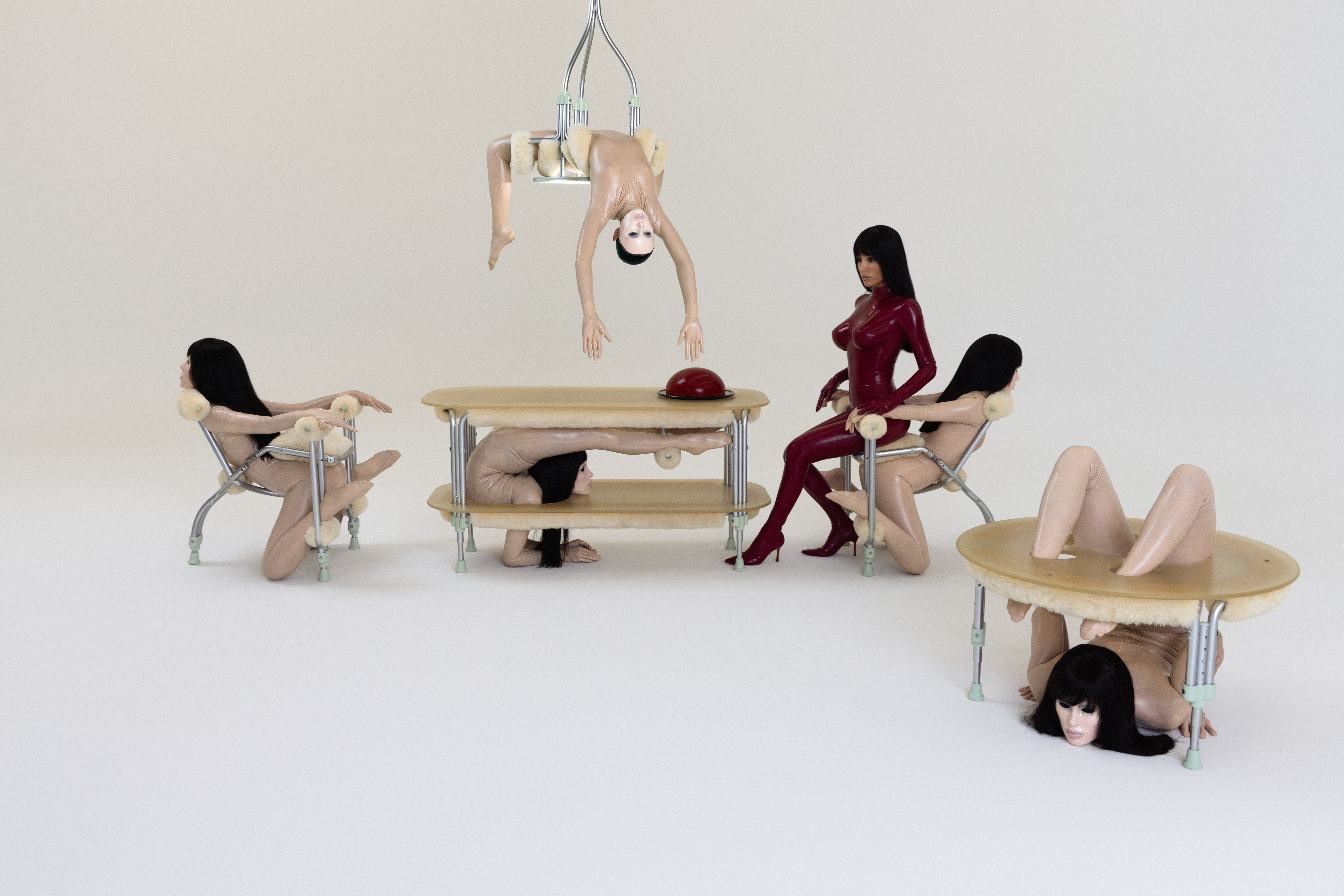 Eight questions for Bianca Censori, as she unveils her debut performance
Eight questions for Bianca Censori, as she unveils her debut performanceBianca Censori has presented her first exhibition and performance, BIO POP, in Seoul, South Korea
-
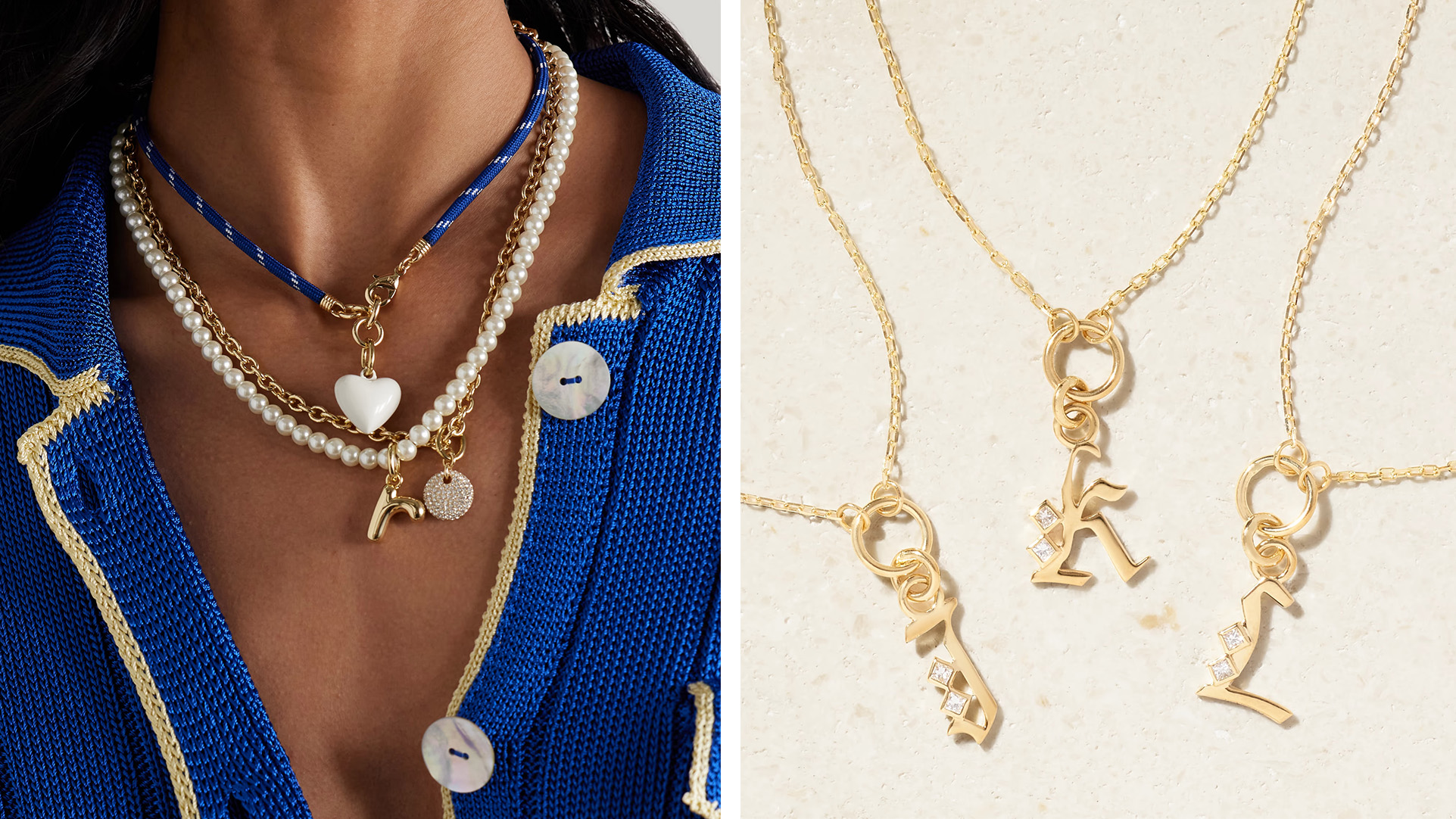 The best layering necklaces for an elevated yet casual look
The best layering necklaces for an elevated yet casual lookHow to mix, match and stack jewellery for the ultimate high-energy, low-effort style
-
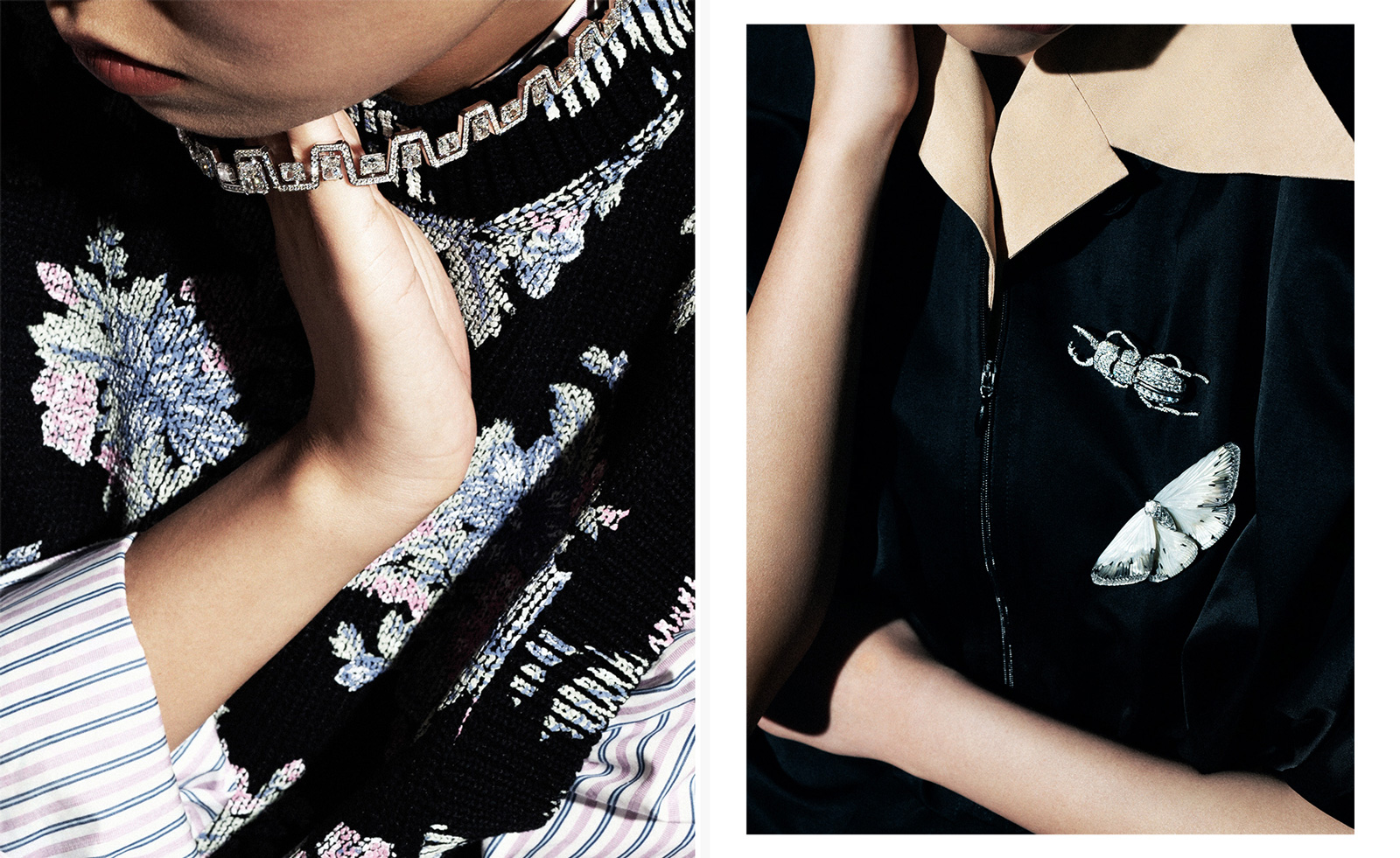 Dazzling high jewellery for statement dressers
Dazzling high jewellery for statement dressersIntricate techniques, bold precious stones and designs unite in these exquisite high jewellery pieces
-
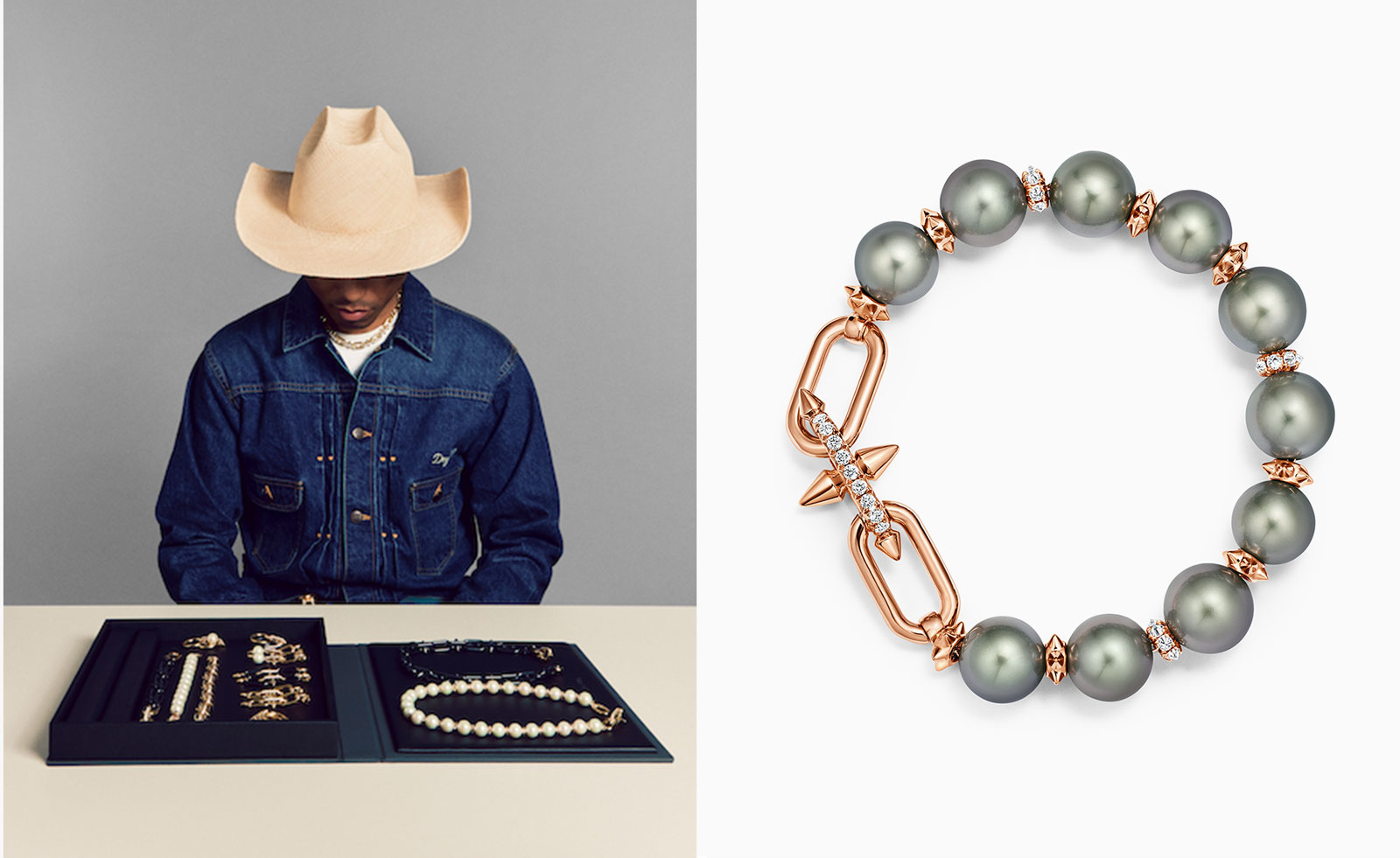 Pharrell Williams and Tiffany & Co put Tahitian pearls and diamonds in the spotlight
Pharrell Williams and Tiffany & Co put Tahitian pearls and diamonds in the spotlightTwo new jewellery collections combine Tiffany & Co’s inventive craftsmanship with the creative vision of Pharrell Williams
-
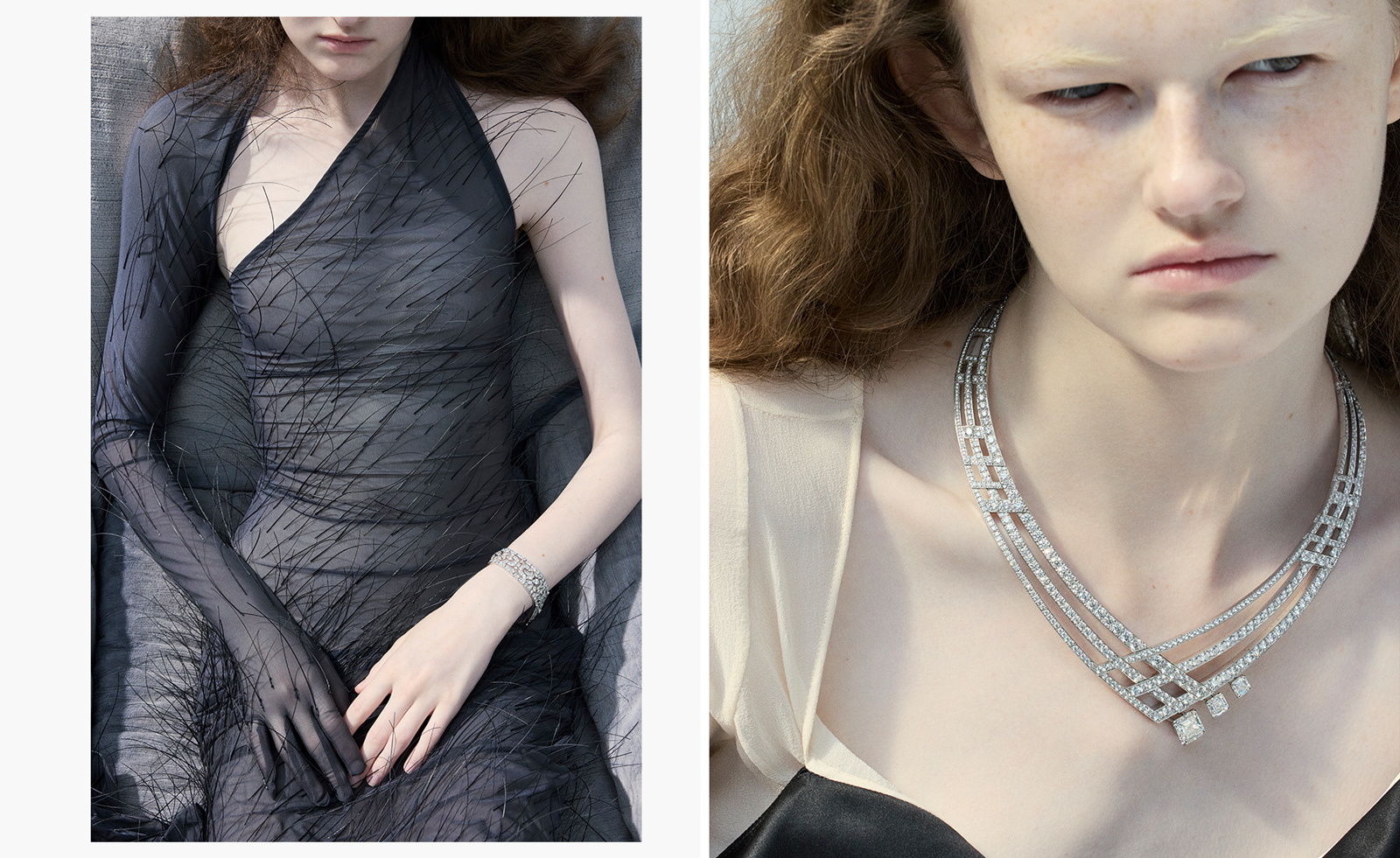 Wild beauties: high jewellery dripping with drama
Wild beauties: high jewellery dripping with dramaThe latest high jewellery collections are fantastic and flamboyant, drawing on a wealth of influences, from a Chopin composition and César Ritz to crocodiles and colour refraction
-
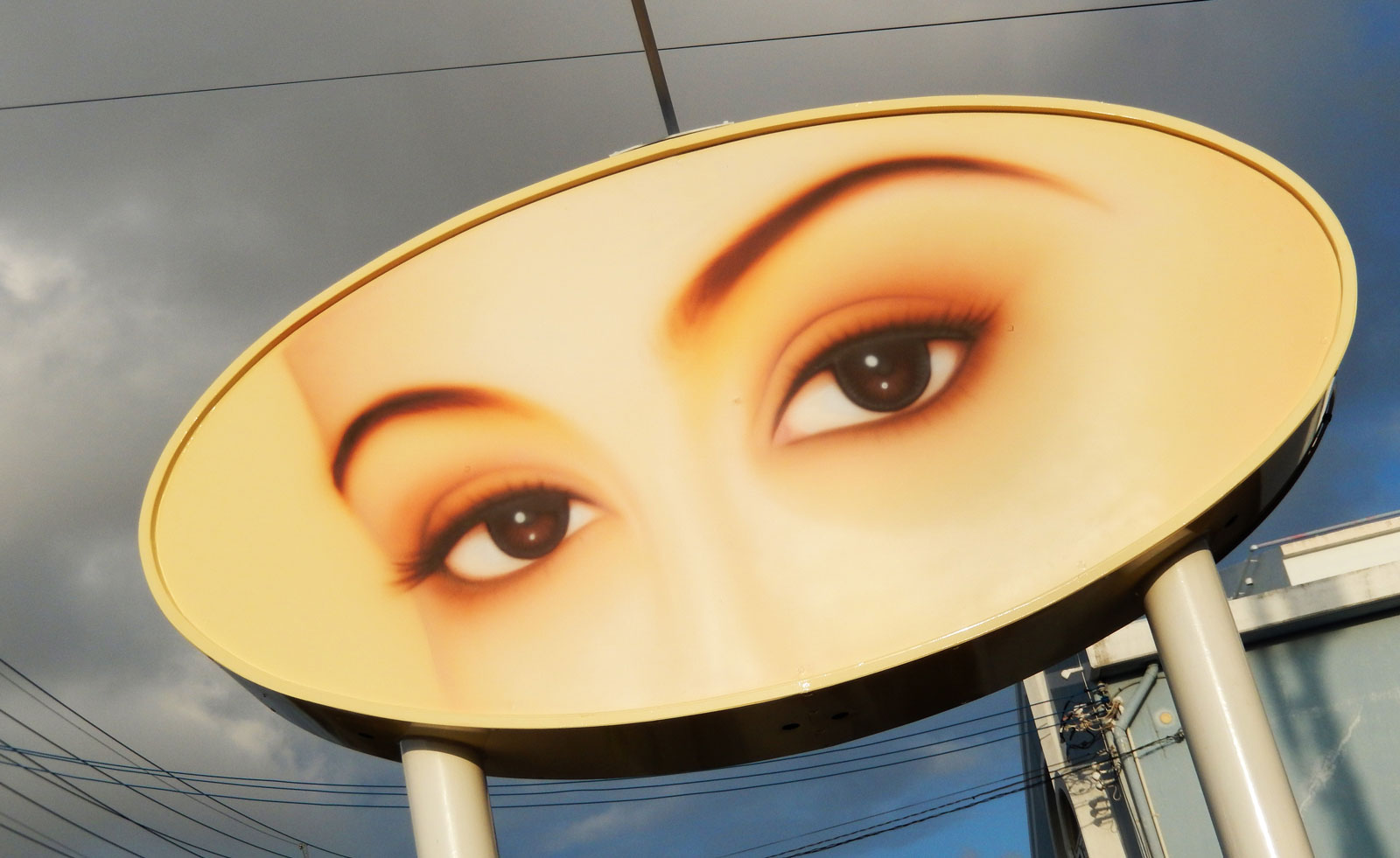 Cartier celebrates Japan’s artistic legacy in Tokyo
Cartier celebrates Japan’s artistic legacy in Tokyo‘Musubi – Half-Century of Cartier in Japan and Beyond’ is a major new exhibition at Tokyo National Museum, celebrating jewellery, Japanese art and creative exchange
-
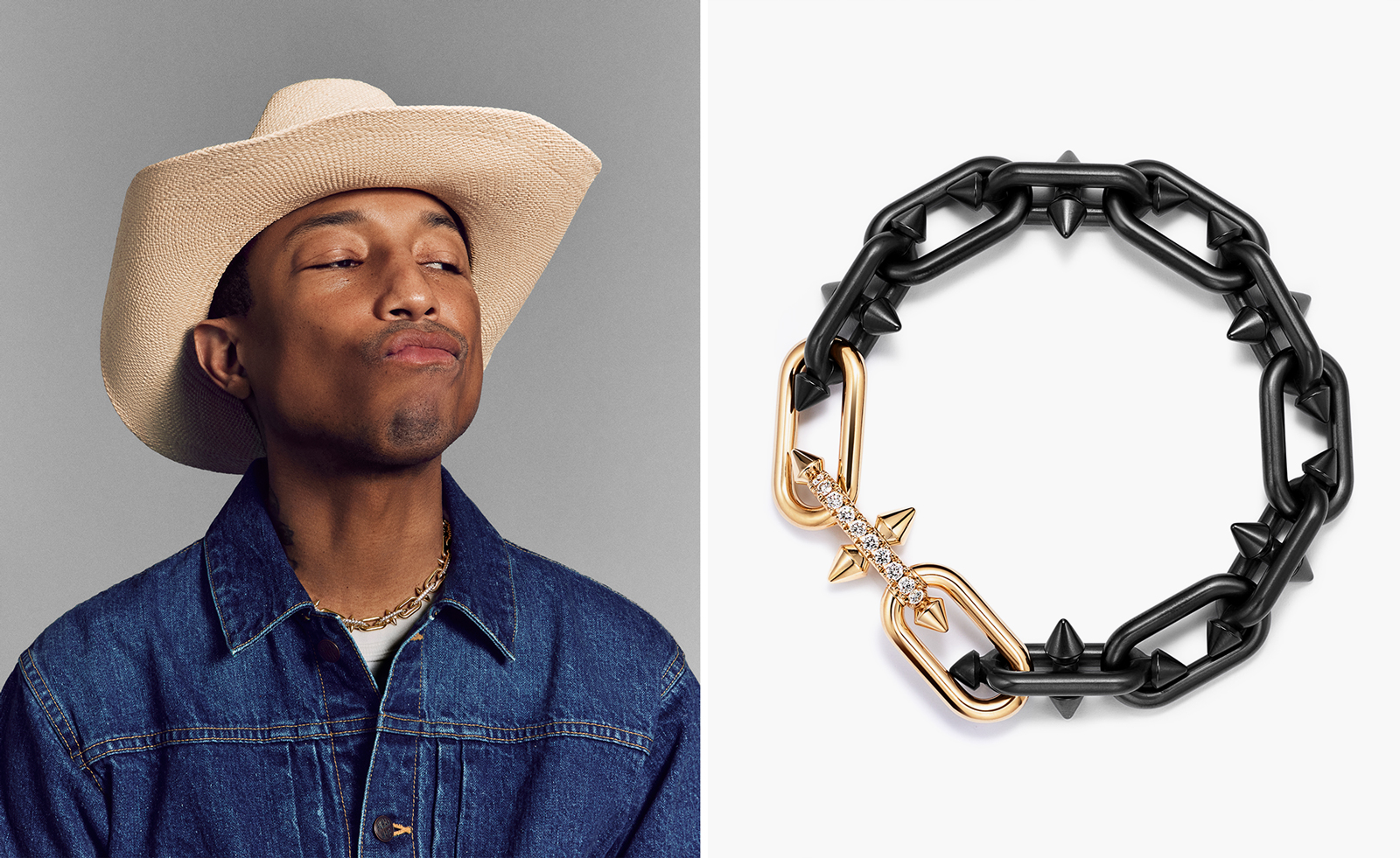 First look at Pharrell Williams and Tiffany & Co’s punkish titanium and gold jewellery
First look at Pharrell Williams and Tiffany & Co’s punkish titanium and gold jewelleryPharrell Williams and Tiffany & Co reveal first jewellery collaboration, ‘Tiffany Titan’, featuring 19 yellow gold and titanium pieces
-
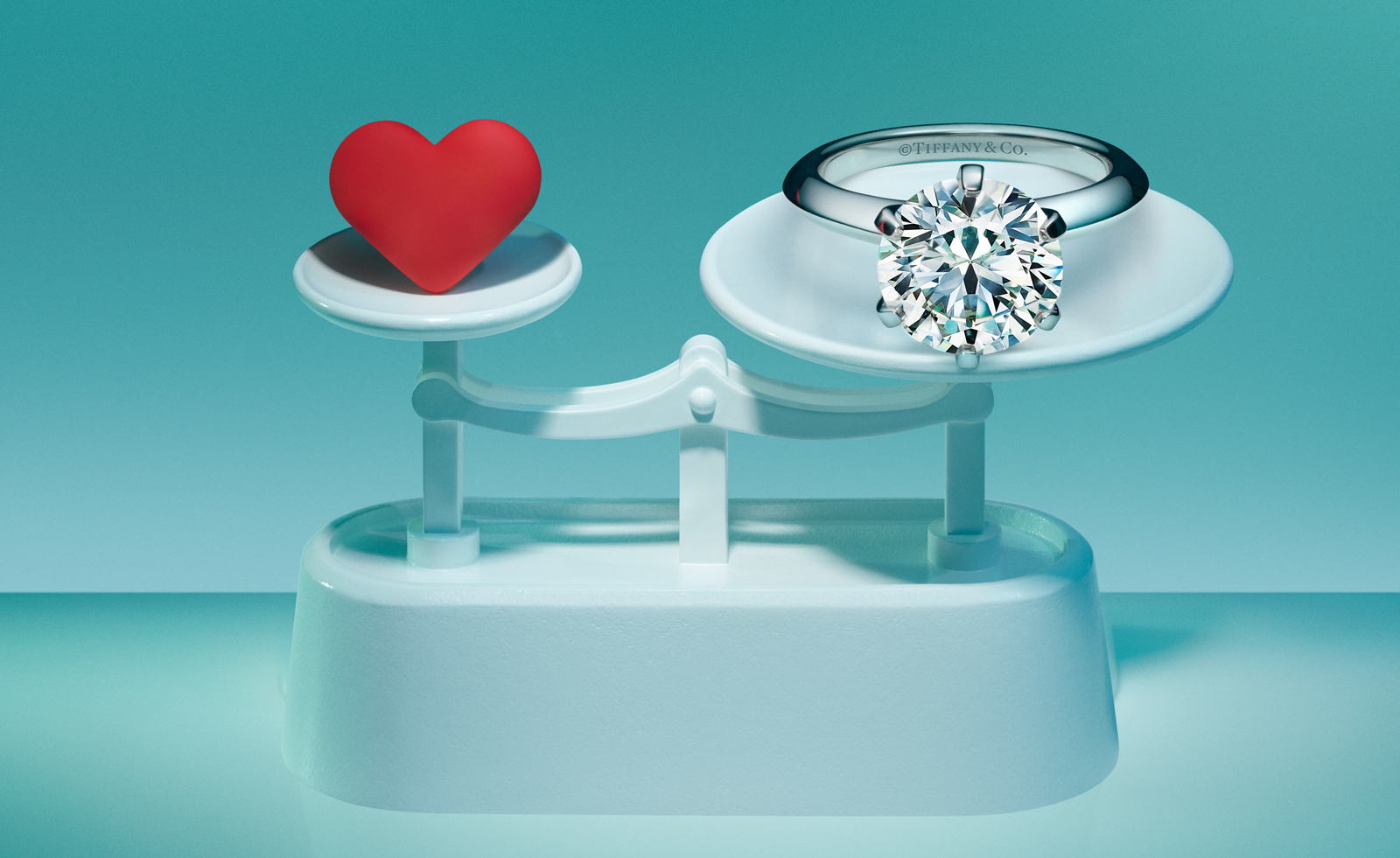 Tiffany & Co nods to its theatrical history with a surreal new campaign
Tiffany & Co nods to its theatrical history with a surreal new campaignTiffany & Co campaign ‘With Love, Since 1837’ sees Dan Tobin Smith and set designer Rachel Thomas create an offbeat set
-
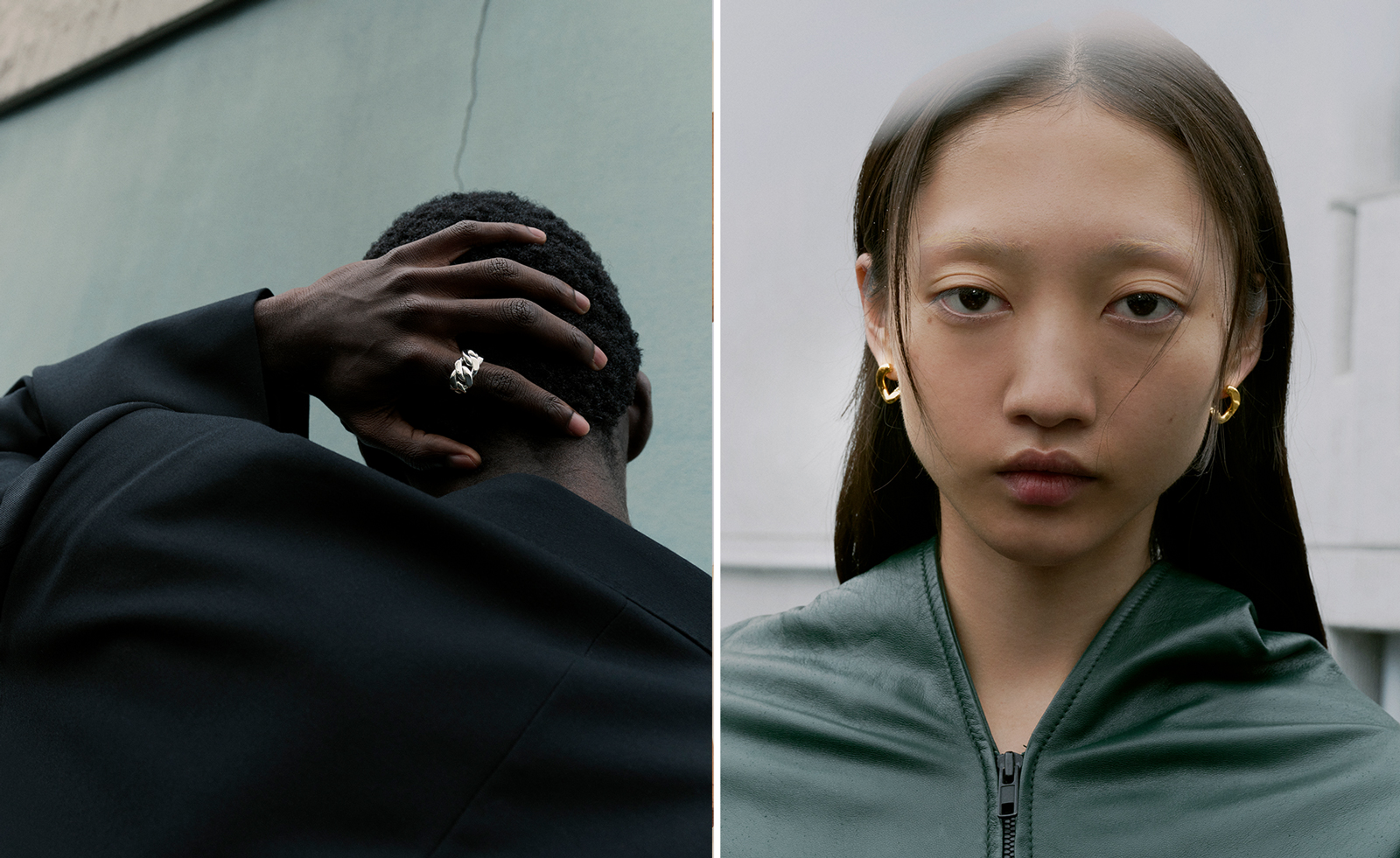 Tom Wood in Tokyo: Nordic minimalism meets Japanese cool
Tom Wood in Tokyo: Nordic minimalism meets Japanese coolNorwegian jewellery brand Tom Wood expands into Japan with the ‘Dean’ collection and a Tokyo Aoyama flagship store